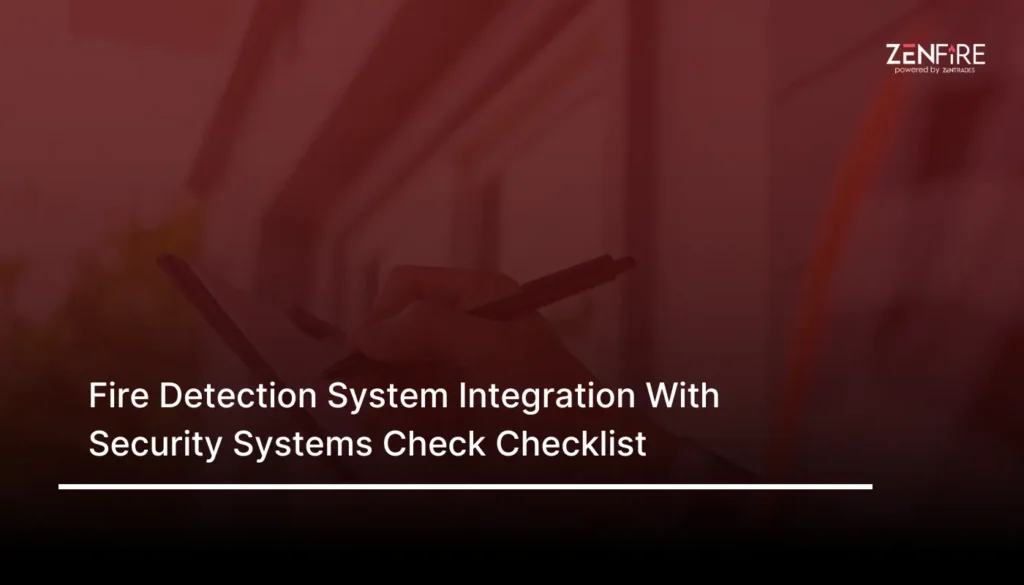fire detection system sensitivity settings Checklist
fire detection system sensitivity settings checklist
Fire detection system sensitivity settings determine the threshold at which the system triggers an alarm in response to smoke or heat. Adjusting sensitivity levels allows customization based on environmental conditions, minimizing false alarms while ensuring prompt detection of genuine fire hazards. Fine-tuning sensitivity settings enhances system reliability, optimizing performance for specific applications and environments. By calibrating sensitivity levels appropriately, the system can effectively distinguish between normal conditions and potential fire events, enhancing overall fire safety. It ensures timely notification of fire emergencies, facilitating swift response and mitigation actions to minimize damage and protect occupants.

Phase 1: Inspecting fire protection equipment or fire safety systems
Phase 2: Identifying fire hazards and people at risk
Phase 3: Assessing risks and evaluating the effectiveness of current measures
Phase 4: Reporting the situation, followed by planning and training as needed
Phase 5: Regular reviewing by the local fire safety authority
The environment of care (EOC) is a site where the treatment of patients takes place. It has to be a safe and healthy setting for patients, staff members, and other personnel at all times. The EC checklist for fire safety reviews some essential requirements, procedures, and life safety systems like fire sprinkler systems, fire pumps, fire alarm systems, fire suppression systems, fire extinguishers, compartmentation and egress, generator sets/alternative power, etc. The tasks, however, may vary depending on the facility, safety systems, and location. For details, one must contact the local Authority Having Jurisdiction (AJH). Regular reviewing by the local fire safety authority
Yes, using fire inspection software can make your business more productive. It offers several advantages over traditional pen-and-paper methods, such as:
Increased efficiency and organization: Say goodbye to lost paperwork and cluttered files. Fire inspection software stores all your data electronically, making it easy to find, sort, and filter inspections and inspection reports by date, building, inspector, or any other relevant criteria. Imagine the time saved searching through physical folders!
Scheduling and Inspection tracking: Any Fire protection business could streamline fire inspector schedules and schedule inspections for upcoming inspections. Mobile devices and iPads can be used to access inspection checklists, create inspection reports of completed inspections, and ensure compliance.
Improved data accuracy and completeness: No more relying on handwritten notes that can be illegible or prone to errors. Fire inspection software provides standardized forms and checklists, ensuring accurate data capture and reducing the risk of missed items. Fire Professionals and office users can access past service proposals and inspection requirements, stay up to date with life safety regulations, save time, reduce errors, and easily track inspection reports.
Enhanced reporting and analysis: Generate comprehensive reports with just a few clicks, identifying trends, patterns, and areas for improvement. Analyze inspection data over time to track progress and make data-driven decisions about fire safety.
Real-time access and collaboration: Access inspection data and reports from anywhere, anytime, on any device. Share information with colleagues and stakeholders easily, facilitating better communication and collaboration.
Reduced compliance risk: Stay on top of fire safety regulations and standards with built-in reminders and automated notifications. Upload and store supporting documents like certificates and permits directly within the software. Forms and checklists in ZenFire help fire inspectors ensure that their fire alarm systems are compliant with the most recent safety requirements and perform fire inspections efficiently.
ZenFire understands there's no one-size-fits-all budget. That's why we offer flexible pricing plans tailored to your specific needs. We guarantee you'll get the features and functionality you require for efficient fire inspections without breaking the bank. Compared to most software, you'll be surprised by how much more you get for your investment with ZenFire.
As per NFPA 10, an inspection of extinguishers should be done during initial installation and once a month after that. If extinguishers are present in locations where they are more prone to rust, impact, or tempering, the inspection must happen more frequently.
